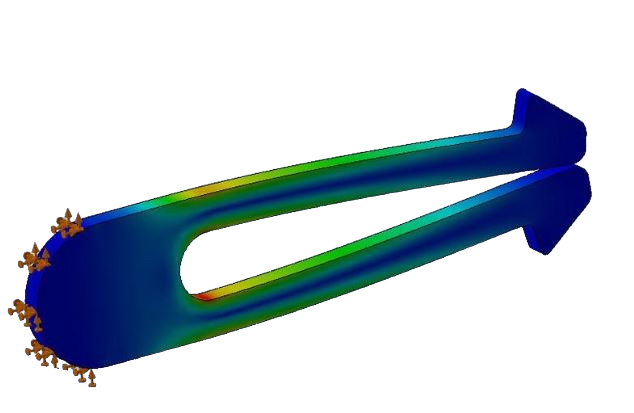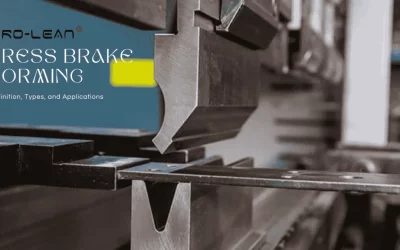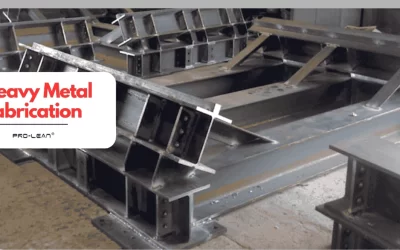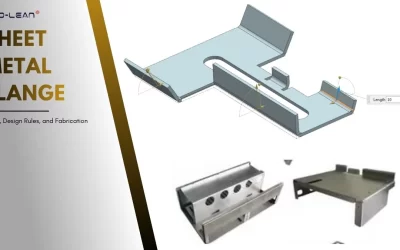
In the evolving landscape of design and manufacturing, efficiency and innovation are at the forefront. One remarkable achievement in this sphere is the introduction and rapid adoption of snap fits. These connectors, designed to easily “snap” components together, are becoming the bedrock of modern assembly techniques. Unlike traditional methods that rely on screws, adhesives, or welds, snap fits promise quicker assembly, simpler designs, and cost-effectiveness. Their application transcends industries, from electronics to automotive design.
As we embark on this exploration of snap fits, we will delve into their basics, the ingenuity behind their design, the various types, and the impact they’re set to have on the future of product assembly.
Understanding the Basics of Snap Fits
At a glance, snap fits might seem like simple connectors. However, the physics, engineering, and design intricacies behind them are profoundly sophisticated. Their ability to hold components securely, without the need for external fasteners, is nothing short of revolutionary.
What are Snap Fits?

Snap-fit example
Snap fits are integral fastening features that are molded into plastic components, allowing them to be quickly and reversibly joined. Essentially, they function by permitting a protruding part of one component to elastically deform during assembly until it settles into a recession or behind an obstruction in the mating component. Once settled, the snap fit returns to its original form, securing the connection. This locking mechanism is what lends snap fits their unique advantage in assembly processes.
Table: Basic Mechanism of a Snap Fit
| Phase | Description |
|---|---|
| Engagement | The protruding part of the snap fit begins its interaction with the mating component. |
| Deformation | As the two components come closer, the snap fit elastically deforms to accommodate the joining. |
| Settling | The deformed part of the snap fit settles behind an obstruction or into a recession in the mating part. |
| Locking | The snap fit returns to its original shape, ensuring the components are securely joined. |
Basic Principles of Snap-Fit Design
For snap fits to work effectively, certain principles must be meticulously followed during the design phase:
- Flexibility: The material used for the snap fit must allow for adequate deformation without breaking. The amount of deformation depends on the design and application of the snap fit.
- Undercut Depth: This determines how securely the components will be held together. Too deep, and the snap fit might be difficult to disassemble; too shallow, and the connection might be weak.
- Strain at Joint: The snap fit must be designed such that the strain during assembly doesn’t exceed the material’s elastic limit. Exceeding this can lead to permanent deformation or breakage.
To achieve an optimal snap fit design, engineers often rely on computational simulations, prototypes, and iterative testing. This ensures that the snap fit meets the desired functionality without compromising the longevity or integrity of the components.
Advantages of Snap Fits?
Snap fits are quickly becoming an industry standard due to their various benefits. They are efficient, drastically reducing assembly time by allowing components to be quickly joined without the need for tools or additional materials. Snap fits are also cost-effective, as the elimination of screws, adhesives, and other fastening materials reduces the overall cost of production. Additionally, snap fits offer aesthetic appeal, as product designers don’t have to account for screw holes or other visible fastening components, leading to sleeker designs. Snap fits are also reversible, making them ideal for products that may require maintenance or part replacement.
Overall, the physics, engineering, and design intricacies behind snap fits are sophisticated, making them a revolutionary option for assembly processes. To achieve an optimal snap fit design, engineers rely on computational simulations, prototypes, and iterative testing. This ensures that the snap fit meets the desired functionality without compromising the longevity or integrity of the components.
A Deep Dive into Snap Fit Design

3D modeling of snap fit
In the realm of product assembly, snap fit designs are revolutionizing the way components interact. But what goes into the design of these ingenious connectors? Let’s peel back the layers and explore the meticulous considerations, strategies, and principles that shape the world of snap fit design.
Snap fit design is rooted in understanding the dynamic interaction between two mating components. It’s not just about creating a protrusion on one component and a recession on the other.
The design must ensure that the two parts come together seamlessly, engage securely, and can be disassembled if necessary without causing damage. This requires a deep understanding of material behavior, geometry, and the intended application.
Following are the key phases involved in snap fit design process.
1. Material Selection in Snap Fit Design
Material plays a pivotal role in snap fit functionality. Its elasticity, strength, and deformation characteristics directly influence the snap fit’s performance. Materials must have the ability to deform and then return to their original shape. Polymers like polypropylene and ABS are commonly used due to their excellent elastic properties.
The materials should be robust enough to withstand the forces during assembly and disassembly without failing. For products that require frequent assembly and disassembly, the snap fit material must endure repeated cycles without significant wear or degradation.
2. Key Geometric Considerations
The geometry of a snap fit is paramount. Even minor deviations can result in a poor fit or failure. Key geometrical aspects include:
- Engagement Angle: The angle at which the protruding snap fit begins its interaction with the mating component. This angle ensures the snap fit guides itself into place during assembly.
- Undercut Depth: Determines the depth at which the snap fit settles into the mating component. A balance is essential—too deep might make disassembly challenging, while too shallow may not provide a secure fit.
- Lead-In: This is a taper or slope at the starting point of the snap fit, easing the initial engagement.
Table: Key Geometric Considerations for Snap Fits
| Aspect | Function | Optimal Design Consideration |
|---|---|---|
| Engagement Angle | Guides the snap fit during assembly | Typically between 30° to 45° |
| Undercut Depth | Determines security of the connection | Depth depending on application & material |
| Lead-In | Assists in initial engagement | Gentle slope to reduce force during assembly |
3. Stress and Strain Analysis
One of the most crucial stages in snap fit design is understanding how the material will behave during assembly. Using computational tools, engineers can simulate the assembly process, analyzing the stresses and strains the snap fit undergoes.
If the material is stretched beyond its elastic limit, it may not return to its original shape, weakening the connection. Ideally, stresses should be evenly distributed to avoid concentrated points which might lead to premature failure.
4. Prototyping and Iterative Testing
Before mass production, prototyping is essential. It allows designers to test the snap fit in real-world conditions, verifying its functionality. This phase might require multiple iterations, refining the design based on observations from each test.
- 3D Printing or other manufacturing: Modern snap fit design often employs 3D printing or other suitable approach for rapid prototyping, enabling quick design modifications.
- Functional Tests: These simulate the actual usage of the snap fit, ensuring it meets the desired criteria in terms of strength, ease of assembly, and disassembly.
5. Design for Manufacturability
Snap fit designs need to be manufacturable on a large scale without significant variances. This requires mold considerations, especially in the case of plastic snap fits, and setting achievable manufacturing tolerances while ensuring the snap fit functions effectively.
To achieve an optimal snap fit design, engineers often rely on computational simulations, prototypes, and iterative testing. This ensures that the snap fit meets the desired functionality without compromising the longevity or integrity of the components.
What Are the Different Types of Snap Fits?
Snap fits, though seemingly simple, come in a range of designs tailored for specific applications and functionalities. Each design variation offers its unique advantages and considerations.
Let’s dive deep into the most common types of snap fits, exploring their design intricacies and optimal use cases.
1. Cantilever Snap Fit Joint
The cantilever snap fit joint is one of the most recognized forms of snap fits. Characterized by a protruding arm that snaps into a receptacle or mating component, it’s revered for its straightforward design and reliability.
The cantilever design usually has a hook at the end which engages with an undercut on the mating part. This design allows for easy assembly and disassembly, making it perfect for applications that require frequent component interactions.
It’s crucial to ensure the material used has adequate flexibility, as the cantilever arm undergoes deformation during assembly.
2. Torsion Snap Fit Joint
Torsion snap fits leverage the twisting motion of the material, which, upon assembly, returns to its original state to create a secure connection. These snap fits are characterized by their circular or semi-circular arms which undergo a slight twisting motion during assembly.
Torsion snap fits are particularly suitable for cylindrical components. The torsional movement provides a uniform stress distribution, making it less prone to wear and tear. Ensuring the right material elasticity is crucial. Too stiff a material can make assembly challenging, while too flexible may not provide a secure fit.
3. Annular Snap Fit Joint
Annular snap fits are typically used in scenarios where a shaft or a cylindrical component needs to be secured inside a housing or a bore. These fits features an outer ring on one component that snaps into a groove inside the mating component.
This design ensures a 360-degree engagement, leading to a uniformly distributed load and a secure fit. Furthermore, precise tolerances are vital to ensure a snug fit without overstraining the material.
Table: Key Features of Common Snap Fits
| Snap Fit Type | Key Design Aspect | Primary Advantage | Primary Consideration |
|---|---|---|---|
| Cantilever Snap Fit | Hooked end for engagement | Easy assembly and disassembly | Material flexibility |
| Torsion Snap Fit | Circular arms with twisting motion | Uniform stress distribution | Material elasticity |
| Annular Snap Fit | Outer ring and inner groove engagement | 360-degree secure engagement | Precise tolerances |
Choosing the Right Snap Fit for the Job?
With a plethora of snap fit designs available, selecting the optimal design often hinges on the specific application, the materials in play, and the desired longevity of the joint.
- Application: Consider the frequency of assembly and disassembly. For instance, products that are meant to be assembled once, like many consumer electronics, might favor different snap fits than products intended for repeated interactions.
- Material Compatibility: Certain snap fits, by their design, may put more strain on the joining materials. Ensuring compatibility between the snap fit design and material properties is essential.
- Assembly Process: Automated assembly lines might have different requirements than manual assembly processes. Snap fits should be designed with the assembly method in mind.
Challenges in Snap Fit Design
Designing snap fits might seem straightforward, but the process entails intricate considerations. These mechanisms, though effective, present certain challenges which, if overlooked, could compromise the function and durability of the final product.
Table: Detailed Analysis of Snap Fit Challenges and Considerations
| Key Areas of Consideration | Challenge/Aspect | Description/Concern |
|---|---|---|
| Material Selection Dilemmas | Brittleness Factor | Some materials might be too brittle for snap fits and could crack or break with repeated use. |
| Wear and Fatigue | Materials not apt for constant flexing may wear out quickly, leading to a weakened joint. | |
| Achieving Precision Tolerances | Dimensional Accuracy | Minor deviations in design can make a snap fit ineffective. Assembly may be too challenging or joints too loose. |
| Tooling Challenges | Achieving exact precision might require specific tooling, which can increase manufacturing costs. | |
| Ensuring End-User Safety | Sharp Edges | Poorly designed snap fits might have sharp edges or points, posing an injury risk during assembly or regular use. |
| Ingestion Hazards | In products like toys, snap fits should be designed to prevent detachment and ingestion risks. | |
| Balancing Aesthetics and Function | Visible Joints | A functional snap fit could detract from a product’s appearance if it causes visible joint lines or gaps. |
| Reassembly Marks | Disassembling and reassembling might leave visible marks around the snap fit, affecting aesthetic appeal. |
Conclusion
Snap fits are fundamental in the realm of product design and assembly today. Their ability to simplify assembly processes, reduce costs, and enhance the overall user experience makes them indispensable. However, as with all engineering marvels, challenges exist. With meticulous design, precise manufacturing, and a keen understanding of materials and user needs, these challenges can be effectively addressed. In the evolving world of design, where efficiency meets aesthetics, snap fits undoubtedly hold a pivotal place.
FAQs
1. What materials are best suited for snap fit design?
Polymers like ABS, polypropylene, and nylon are popular choices due to their balance of strength and flexibility.
2. How can one ensure the longevity of snap fits?
Proper material selection, precise design, and periodic checks can prolong the life of snap fits.
3. Are snap fits only used in plastic products?
While most common in plastics due to the material’s flexibility, snap fits can also be found in metal or composite products, though with different design considerations.
4. Can snap fits be replaced if worn out?
It depends on the product design. Some products allow for snap fit replacement, while others might need the replacement of the entire component or assembly.
5. How do snap fits contribute to sustainability?
Snap fits enable easy disassembly of products, making recycling processes more efficient. They also reduce the need for additional fasteners, leading to fewer materials being used




0 Comments